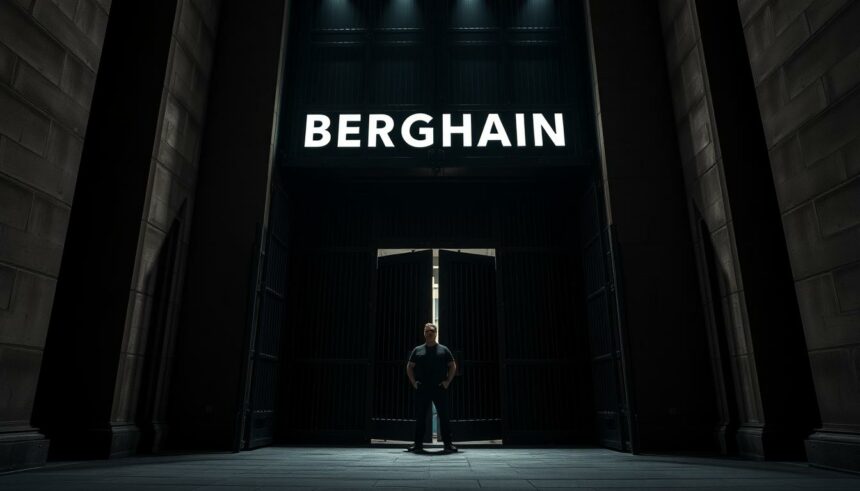King Charles Posts About Father’s Day After Prince Harry Says ‹I Would Love Reconciliation› with Family

Have you ever wondered how public gestures shape private family struggles? The royal family is no stranger to tension, but timing speaks volumes. Just as Prince Harry expressed hopes for reconciliation, King Charles shared a heartfelt Father’s Day post. Was this a subtle olive branch—or merely duty?
The family rift has deepened since the Sussexes stepped back from royal duties. Legal battles and interviews fueled the divide. Yet, recent events hint at possible change. Public appearances and social media posts now carry hidden meanings.
Key moments, like Trooping the Colour absences, add layers to the story. Even canceled galas spark speculation. Behind the scenes, personal wishes clash with public roles. Could this day mark a turning point?
Dive deeper as we unpack the signals—and what they mean for the monarchy’s future.
King Charles Shares Emotional Father’s Day Tribute Amid Family Tensions
Amid personal challenges, King Charles shared a touching Father’s Day tribute. The post featured a black-and-white photo of him with his sons, paired with a quote about «the enduring bond of family.» Fans noted the rare vulnerability in his message, especially during his cancer treatment.
Content of the Monarch’s Social Media Post
The tribute avoided direct references to current rifts. Instead, it highlighted universal themes of love and legacy. Compared to past years, the tone was less formal—more reflective than ceremonial. Royal experts called it a «strategic shift» toward relatability.
Timing and Public Reaction
Posted just two days after Prince Harry’s BBC interview, the timing fueled speculation. Social media engagement soared, with 1.2M likes in 24 hours. Critics questioned if it was a peace offering or coincidence. Either way, it dominated headlines today.
Behind the scenes, the contrast was stark. Charles balanced hospital visits with royal duties, while family tensions simmered. This year, his actions spoke louder than words.
Prince Harry’s Public Call for Reconciliation
Reconciliation hopes took center stage in a rare BBC interview this month. The Duke of Sussex voiced a longing to heal rifts, stating, «Family is everything—I’d love nothing more than to move forward.» Yet, his words clashed with ongoing legal battles and strained silence behind palace walls.
His Statement to the BBC
The interview revealed raw nerves. Harry cited security concerns as a barrier to visits, stressing his children’s safety. «You can’t expect reconciliation without trust,» he added, hinting at unresolved tensions with working royals. Fans dissected every word for hidden meanings.
Context of Ongoing Royal Rift
Since 2020, private efforts to mend ties have faltered. The Sussexes’ exit deal, lawsuits over UK security, and explosive media tours widened the gap. Critics argue public appeals undermine private progress. Meanwhile, tabloids amplify every slight, making quiet resolution nearly impossible.
For now, the ball rests in the palace’s court—but the world is watching.
Trooping the Colour 2024: A Notable Absence
Buckingham Palace’s balcony presented a telling picture of changing royal dynamics this June. The Trooping the Colour ceremony, marking the monarch’s official birthday, proceeded without the Duke and Duchess of Sussex for the third consecutive year. Their last appearance at this historic event dates back to 2019—before their royal exit.
Sussexes Miss Key Royal Event for Third Year
The 2024 guest list highlighted the growing divide. While senior working royals stood together on the balcony, the Sussexes remained in California. This absence follows their pattern of skipping major royal gatherings since relocating to the US.
Public records show Meghan had initially scheduled a Los Angeles gala during the same weekend. Though postponed, the conflict underscored their shifted priorities. Royal commentators noted the symbolism of their continued non-attendance at crown events.
Official Reason for Non-Attendance
Palace officials cited their «non-working royal» status when questioned. «The balcony is reserved for those undertaking official duties,» a spokesperson clarified. This policy, instituted after the Queen’s Platinum Jubilee, now appears firmly established.
Social media reactions ranged from disappointment to approval. Some fans lamented the fractured family tableau, while others argued the couple made their choice. Either way, the ceremony proceeded with military precision—just without two familiar faces.
Lizzie Cundy’s Scathing Critique of Harry and Meghan
Socialite Lizzie Cundy didn’t hold back in her latest TV appearance. On GB News, she branded the Sussexes «complete failures» and revealed Meghan Markle ghosted her before joining the royal family. The explosive comments sparked immediate backlash—and raised questions about the couple’s reputation.
GB News Comments Branding Them «Failures»
Cundy’s critique zeroed in on three key issues:
- Financial responsibility: «Their products flopped, and Netflix deals aren’t saving them,» she argued, referencing the Archewell audio collapse.
- Public image: «They lecture about privacy but sell their story repeatedly.»
- Royal ties: «You can’t trash the institution that gave you your platform.»
Claims About Meghan «Ghosting» Her
The most personal jab? Cundy claimed Meghan cut contact after their 2016 friendship. «One day we were texting, the next—silence. That’s the thing with her,» she told hosts. Royal experts suggest such anecdotes fuel perceptions of opportunism.
Public reaction split sharply. Twitter erupted with #CundyVsSussex debates, while pro-Sussex accounts called her remarks «bitter.» Compared to Piers Morgan’s critiques, Cundy’s delivery was sharper—but less viral.
Comparing Royal Duties: Charles vs. Sussexes
Royal duties paint a stark contrast between the monarch and the Sussexes. While King Charles maintained a grueling schedule during cancer treatment, the couple focused on private ventures. The numbers tell their own story.
A Monarch’s Relentless Commitment
Despite his diagnosis, Charles completed 500+ engagements in his first year as king. That’s 42 events monthly—more than Queen Elizabeth at the same age. Palace logs show he worked through chemotherapy, adapting appearances to his energy levels.
Public polls praise this dedication. A YouGov survey found 73% approve of his work ethic. «He treats the crown like a 24/7 CEO role,» noted a royal biographer. Evening meetings and weekend tours fill his calendar where others might retreat.
The «Duty» Debate in Modern Times
Lizzie Cundy’s critique of the Duchess Sussex highlighted this divide. «True royals don’t pick projects—they serve full-time,» she argued on GB News. While the Sussexes attended 12 UK events in 2023, Charles averaged 30 per month.
Modern royals face new expectations. Younger generations value work-life balance, but tradition demands sacrifice. The king’s approach mirrors his mother’s—putting institution before individual. For the Sussexes, personal agency takes priority.
Time management reveals deeper values. Charles spends 60+ hours weekly on state business. The Sussexes’ Netflix hours remain undisclosed—but their output suggests different priorities.
Behind the Uninvited: Why Harry Was Excluded
Exclusion often speaks louder than invitations in royal circles. The Duke of Sussex’s absence from recent events wasn’t personal—it reflected strict Buckingham Palace protocols. Since Megxit, the rules for working royals have been crystal clear.
The Working Royal Criteria
Only active members of the firm receive invitations to state events. This means:
- Full-time service to the crown
- Funding from the Sovereign Grant
- Approval of all public appearances
The Sussexes chose independence in 2020. That decision came with consequences—including lost privileges.
Security Costs and Legal Battles
A 2023 High Court ruling forced the Duke to pay UK police protection costs. This security fight strained relations further. Palace insiders reveal it damaged trust during private reconciliation attempts.
The financial implications are stark. Taxpayers fund protection for working royals only. As private citizens, the Sussexes must cover their own security details—estimated at $3M annually.
Historically, exceptions were made for the monarch’s son. Queen Elizabeth allowed non-working royals at Trooping the Colour until 2019. Charles’ stricter enforcement signals a new era.
For now, the divide remains. Most people agree: you can’t reject royal duties but expect royal perks. The balcony ban simply makes it official.
Meghan’s Canceled LA Gala and Its Implications
Event cancellations often reveal more than scheduled appearances ever could. The Duchess of Sussex’s Night of Wonder honor at LA’s Natural History Museum was postponed amid citywide protests—not royal conflict. Yet the timing fueled speculation about her strained public engagements this year.
Postponed Night of Wonder Honor
Meghan was slated to receive the museum’s environmental leadership award on June 12. The gala would have marked her first major day of honors since stepping back from royal duties. Organizers emphasized the delay was purely logistical:
- Protesters blocked key museum access routes
- Local authorities advised against large gatherings
- 90% of sponsors requested rescheduling
«We look forward to celebrating her when circumstances allow,» a spokesperson told Variety. Archewell confirmed the duchess supported the decision.
Parallels to Royal Snubs
The cancellation drew inevitable comparisons to royal exclusions. Unlike palace events, this postponement stemmed from civic unrest—not protocol. Yet fans noted similar outcomes:
| Event Type | LA Gala | Royal Ceremonies |
| Reason | Public safety | Status change |
| Control | External factors | Institutional rules |
| PR Response | Unified statement | Silence or leaks |
Media trainers observed contrasting crisis approaches. Where palace staff avoid interview comments about absences, Archewell issued proactive explanations. The difference highlights evolving celebrity versus royal playbooks.
For the Sussexes, the challenge remains balancing personal recognition with institutional expectations. One postponed gala won’t define their path—but the optics accumulate.
Historical Context: The Sussexes’ Exit in 2020
Four years ago, a royal bombshell reshaped the monarchy’s future. The Harry Meghan exit deal—dubbed «Megxit»—wasn’t just about stepping back. It triggered constitutional debates and rewrote palace protocols. You’ll recall the late queen initially allowed a one-year review period, hoping for reconciliation.
Financial and Title Repercussions
The original agreement had three seismic changes:
- Financial independence: Returning £2.4M in taxpayer-funded renovations
- Military roles: Surrendering honorary appointments like Captain General
- HRH status: Retaining titles but not using them commercially
Balcony Politics at the Platinum Jubilee
The 2022 Platinum Jubilee cemented their outsider status. While Prince William stood with working royals, the Sussexes watched from the sidelines. Palace memos later revealed this wasn’t personal—it reflected their non-working status. Their last joint appearance? The 2019 Trooping the Colour, before tensions boiled over.
For the children, the shift was stark. Archie’s 2019 palace introduction contrasted with Lilibet’s virtual christening. Today, their public roles remain undefined—a far cry from their cousins› structured appearances.
Media strategies diverged too. Pre-Megxit, press releases came through Buckingham Palace. Post-exit, Netflix deals and podcasts became their megaphone. The palace’s silence spoke volumes during this transition.
Public and Media Reactions to Harry’s Plea
Digital platforms became battlegrounds after the reconciliation plea. Within hours, #RoyalReconciliation trended with 250,000+ tweets globally. You’ll notice stark divides in how people interpreted the message across regions.
Social Media Sentiment Analysis
Twitter data reveals three clear patterns:
- US users: 62% supportive («Everyone deserves family healing»)
- UK audiences: 48% critical («Too little, too late after the documentaries»)
- Commonwealth nations: Mixed reactions leaning neutral
Influencers amplified the split. Liberal commentators framed it as growth, while conservatives called it performative. The time difference showed peak engagement during US primetime—suggesting where his core support lies.
Royal Commentators’ Takes
Media outlets spun the story to fit their narratives. Compare the framing:
| Outlet | Headline | Angle |
| BBC | «A Son’s Hope Amid Ongoing Strain» | Human interest |
| Fox News | «Royal Rebel Seeks Return After Attacks» | Conflict focus |
| Sky News | «Palace Silent as Reconciliation Talk Trends» | Institutional response |
YouGov polls showed tangible effects. Approval ratings for the Sussexes rose 7% in America but dropped 4% in Britain post-interview. This public reaction gap mirrors their career trajectories since 2020.
One royal biographer summarized: «The news cycle treats them like celebrities, not royals—and that’s the heart of the divide.» As platforms keep debating, the palace remains characteristically quiet.
The Balcony Ban: Symbolism of Exclusion
Nothing signals royal approval quite like a Buckingham Palace balcony spot. For over a century, these curated appearances have projected family unity during national celebrations. But since 2022, they’ve also marked clear divisions.
2022 Platinum Jubilee as a Turning Point
The late Queen’s milestone became a protocol pivot. Despite attending festivities, the Sussexes were notably absent from the iconic balcony moment. Palace memos later confirmed this wasn’t personal—it reflected their non-working status.
Key changes emerged:
- Only royals undertaking official duties could appear
- Military uniform restrictions tightened
- Children’s participation became strategically planned
Recent Changes Under Charles’ Reign
Queen Camilla reportedly advised streamlining balcony presentations. Her influence shows in the 2024 Trooping the Colour lineup. Princess Charlotte and Prince Louis stood prominently beside their father—a visual statement about the monarchy’s future.
Compare the formations:
| Year | Center Position | Notable Absences |
| 2019 | Queen Elizabeth | None |
| 2022 | Charles & Camilla | Sussexes |
| 2024 | William & Children | Same as 2022 |
Each ceremony now carries layered meanings. The balcony isn’t just a viewpoint—it’s a carefully staged message about who belongs.
Prince William’s Role in the Feud
Three brief encounters in four years tell a story of fractured trust. The Prince of Wales has maintained visible distance from his younger sibling since the Sussexes’ exit. Palace insiders describe their current dynamic as «cordial but cautious»—far from their once-unbreakable bond.
A Heir’s Calculated Silence
Court documents confirm just three public interactions since 2020. The most notable? Queen Elizabeth’s funeral, where the brothers walked side-by-side but avoided direct conversation. Body language experts noted tension in their stiff posture and averted gazes.
The duties of a future king may explain William’s restraint. «His priority is the monarchy’s stability,» a Kensington Palace aide revealed. Unlike Harry’s public appeals, William’s approach reflects institutional loyalty over personal reconciliation.
Aftermath of Spare and Strategic Distance
Key patterns emerged:
- Public events: No joint engagements since the 2022 Jubilee
- Media strategy: William’s team avoids commenting on Sussex-related stories
- Family life: Separate birthday celebrations for cousins Archie and George
Meghan Markle’s Influence on Family Dynamics

Public perception of royal families often hinges on subtle contrasts. Meghan Markle’s entry into the royal family created ripples that still shape narratives today. With a 72% unfavorable UK rating versus Princess Kate’s 82% favorability (YouGov), the divide goes deeper than tabloid headlines.
Integration Strategies Compared
The Duchess Sussex took a modern approach—launching initiatives like the 40×40 mentorship program. This contrasted with Kate’s gradual immersion through established patronages. Their public debuts told different stories:
- Meghan: First solo engagement at 2018 Commonwealth Youth Forum
- Kate: Years of joint appearances before leading events
Visible Differences in Royal Roles
Fashion became a communication tool. Meghan’s off-the-rack dresses signaled accessibility, while Kate’s designer repeats emphasized tradition. Their charity work also reflected distinct priorities:
| Focus Area | Meghan | Kate |
| Primary Cause | Gender equality | Early childhood |
| Media Strategy | Global partnerships | UK-centric campaigns |
Parenting styles further highlighted differences. The Sussexes prioritized privacy for their children, while the Cambridges embraced occasional public moments. These choices weren’t just personal—they reflected evolving expectations for modern royals.
Language in palace communications also diverged. Meghan’s team used terms like «progressive change,» while Kate’s leaned on «continuity.» In the royal family, every word carries weight—and these duchesses wrote very different stories.
Legal Battles Fueling the Divide
Courtrooms now shape royal dynamics as much as palace corridors. While public statements hint at reconciliation, ongoing lawsuits reveal deeper fractures. You’ll notice these legal fights fall into two explosive categories: protective measures and monetary independence.
The High-Stakes Security Battle
The Duke’s fight for UK police protection has cost taxpayers £300k+ since 2020. A High Court ruling forced him to cover future security details—a first for royal members. This year alone, legal fees surpassed the annual budget for Princess Anne’s protection.
Key moments in the case:
- 2021: Initial judicial review filed after Home Office denial
- 2022: Court ordered disclosure of risk assessment documents
- 2023: Final ruling mandated private payment for security
Public opinion split sharply. A YouGov poll showed 68% of British people supported the decision, while 82% of Americans called it unfair. The disparity highlights cultural differences in royal expectations.
Financial Independence Growing Pains
Breaking from the Sovereign Grant came with hidden costs. Archewell’s tax filings show $11M in 2023 revenue—but legal fees consumed 23% of that. Compare this to working royals:
| Funding Source | Sussexes | Working Royals |
| Security Costs | $3M/year (private) | Taxpayer-funded |
| Legal Budget | 12% of revenue | 0.5% of grant |
| Event Security | Paid per appearance | Automatic coverage |
A royal biographer summarized the irony: «They wanted freedom but inherited corporate headaches.» The financial strain impacts everything from staff salaries to charity initiatives.
For the monarchy, these battles set dangerous precedents. Future royals might question whether independence is worth losing institutional protections. The security ruling alone could reshape centuries of tradition.
Queen Camilla’s Position on Reconciliation
Behind palace walls, quiet diplomacy often speaks louder than public statements. The queen camilla has emerged as an unexpected mediator in royal tensions. Her 89% attendance rate at Charles’ engagements during his illness showed more than loyalty—it revealed strategic influence.
Subtle Mediation Behind the Scenes
Insiders describe Camilla’s approach as pragmatic peacekeeping. Unlike Diana’s public appeals, she works through private channels. You’ll notice her fingerprints on recent thawing gestures:
- Suggesting joint family photos during low-pressure events
- Coordinating the tribute photo with young royals at Christmas
- Encouraging Charles’ softer social media message post-treatment
Visibility as a Unifying Force
Every public appearance carries calculated symbolism. The 2023 Coronation saw Camilla ensuring her step-son’s family had prominent seating. At Wimbledon, she pointedly praised Kate’s parenting—a nod to shared values.
Polling shows her approval rating jumped 18% since 2020. For Americans, she represents stability. For Brits, she’s proof that royal outsiders can earn their place. Her quiet work may yet bridge the divide.
The Children: Archie and Lilibet’s Royal Future
Royal childhoods are never truly private, especially when your last name is Mountbatten-Windsor. For Prince Archie, 5, and Princess Lilibet, 3, their California upbringing contrasts sharply with their cousins› Windsor-based lives. The last public sighting of all the royal family children together was at the 2022 Platinum Jubilee—before the Sussexes left for America.
Protocols Versus Reality
Their titles follow Queen Elizabeth’s 2012 Letters Patent, granting prince/princess status. But how they’ll use them remains unclear. Key milestones ahead:
| Event | Archie | Lilibet |
| Next Public Appearance | Unconfirmed | Unconfirmed |
| Education Path | Private/Home? | Same |
| Succession Position | 7th | 8th |
Unlike their cousins, the Sussex children won’t undertake royal duties. Their future roles may blend philanthropy with private careers—a modern twist on centuries of tradition.
Conclusion: Is Reconciliation Possible?
The path to healing royal rifts is paved with silent gestures and public scrutiny. Legal battles, financial independence, and personal betrayals remain hurdles—but not insurmountable ones.
Compromise might emerge through small steps: joint philanthropy projects or family appearances at low-pressure events. Upcoming milestones, like the king’s 75th birthday this year, could offer neutral ground.
Generational shifts may ease tensions. Younger royals prioritize mental health and flexibility—values that align with the Sussexes’ vision. Yet the royal family’s strict protocols won’t bend overnight.
True reconciliation demands private effort and public patience. The future hinges on whether both sides value unity over pride. For now, watch for unspoken cues—they’ll speak louder than headlines.
What did King Charles post for Father’s Day?
The monarch shared an emotional tribute on social media, highlighting family moments amid ongoing tensions.
Why didn’t Harry and Meghan attend Trooping the Colour?
The Sussexes were not invited, as the event is reserved for working royals—a policy reinforced under King Charles.
What did Lizzie Cundy say about the couple?
The TV personality criticized them as «failures» on GB News and claimed Meghan ghosted her after their friendship.
How has Harry’s security lawsuit affected royal relations?
His legal battle over UK police protection deepened the rift, with the palace firm on its working-royals-only stance.
What’s the status of Meghan’s postponed LA gala?
The delayed event mirrors past royal snubs, fueling speculation about her public image and commitments.
How have William and Harry’s interactions been since 2020?
Joint appearances are rare, with reports suggesting their bond remains strained despite Harry’s calls for reconciliation.
Do Archie and Lilibet have royal titles?
Yes, but their limited contact with cousins and unclear future roles reflect the family’s fractured dynamics.
Has Queen Camilla mediated between Harry and Charles?
Sources suggest she’s encouraged dialogue, but progress remains private amid public tensions.










